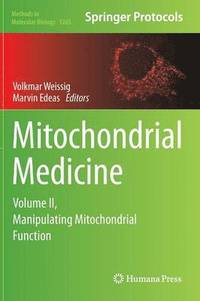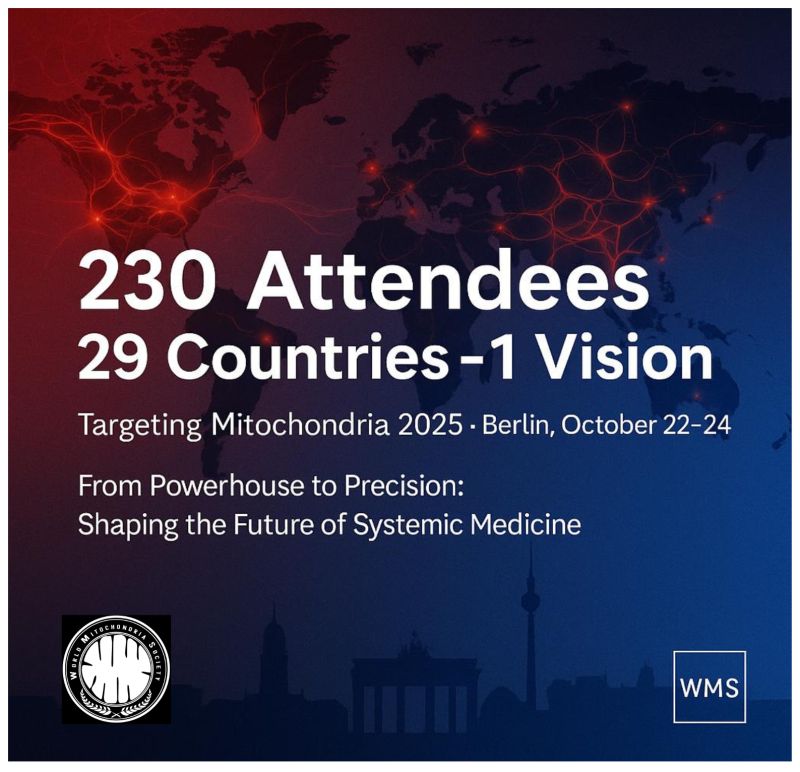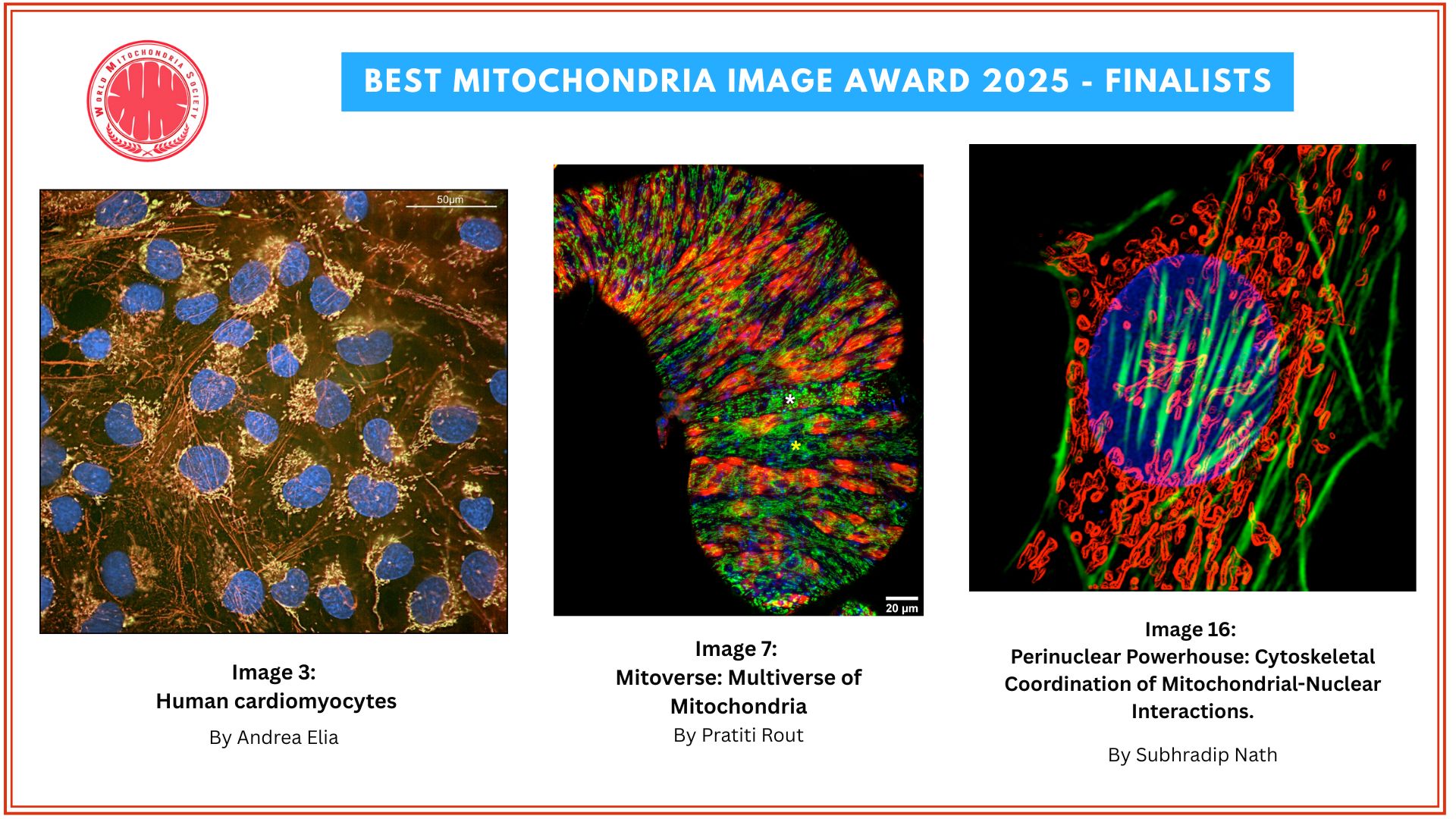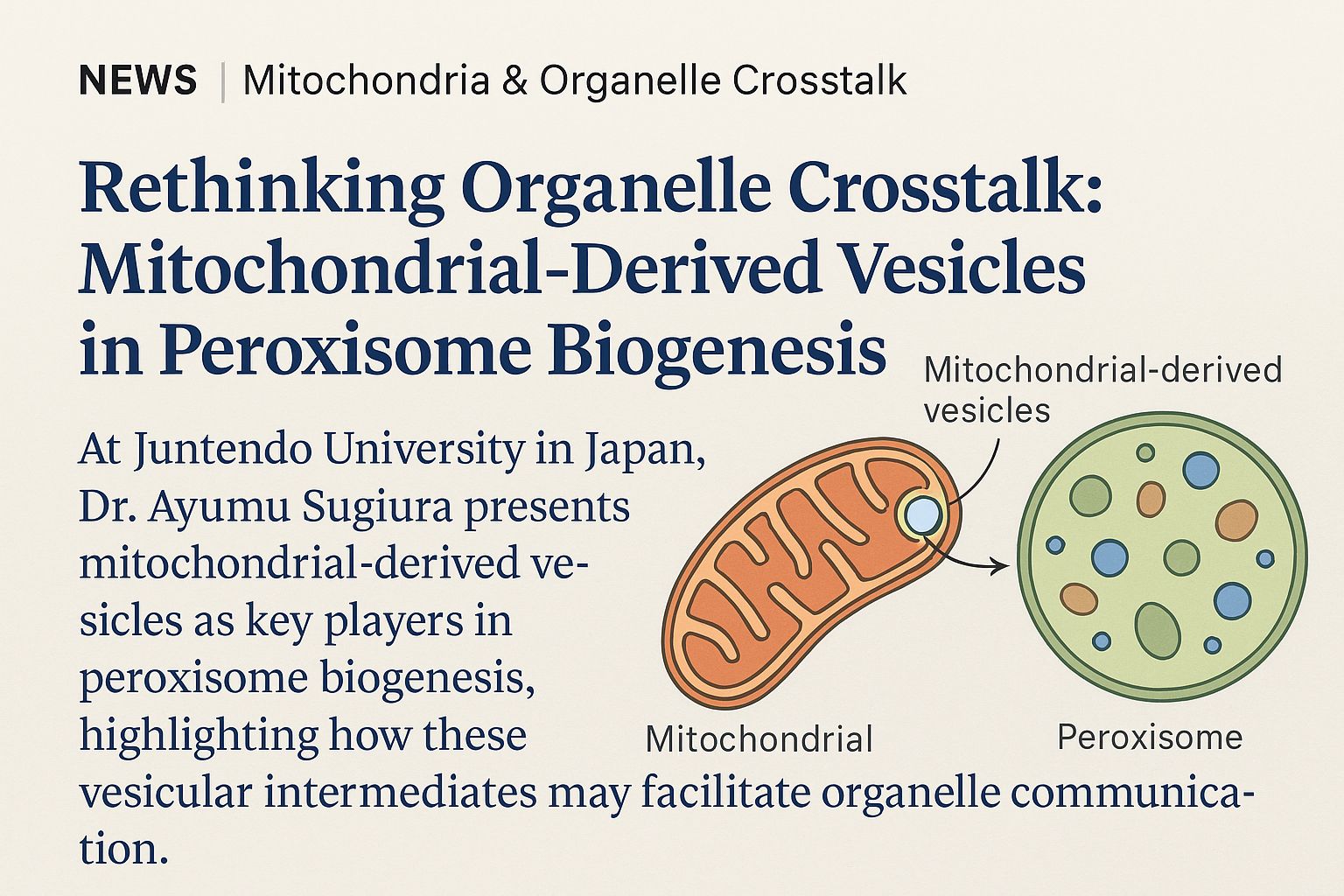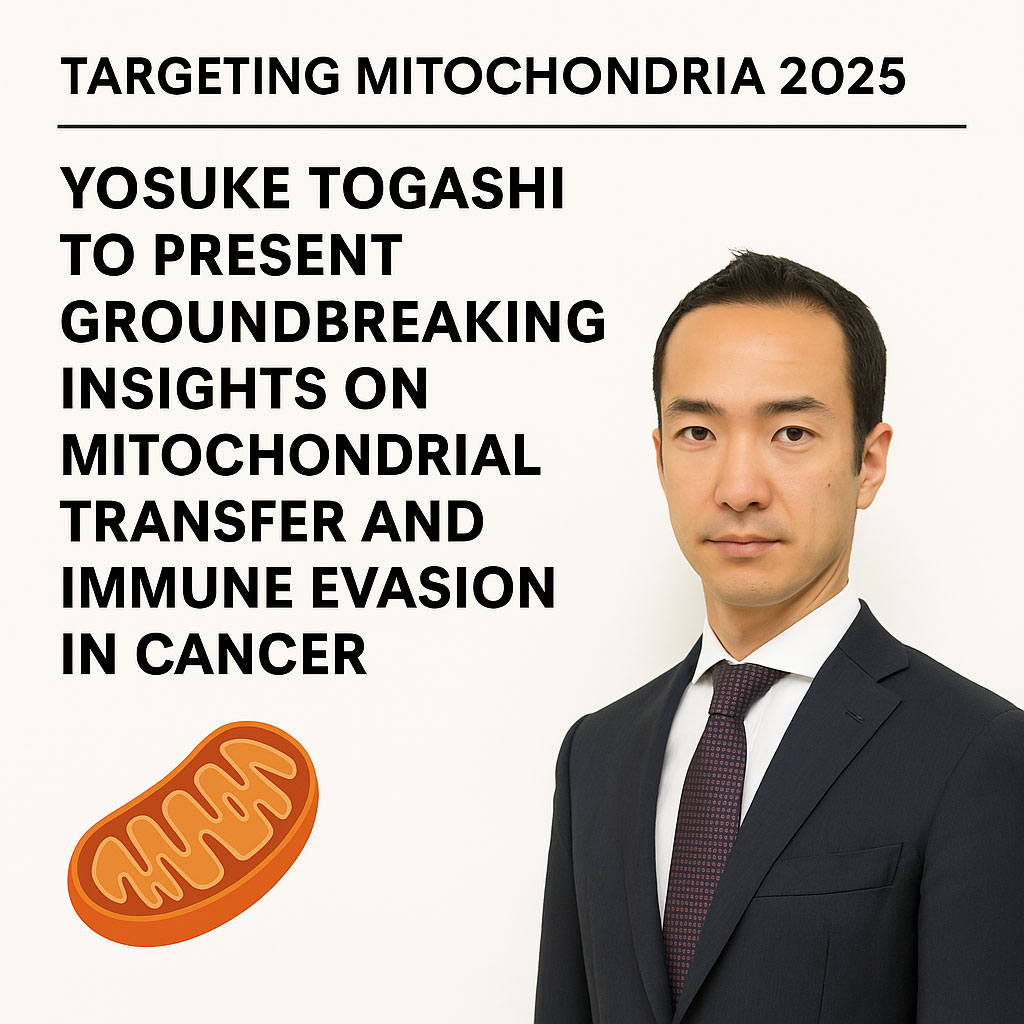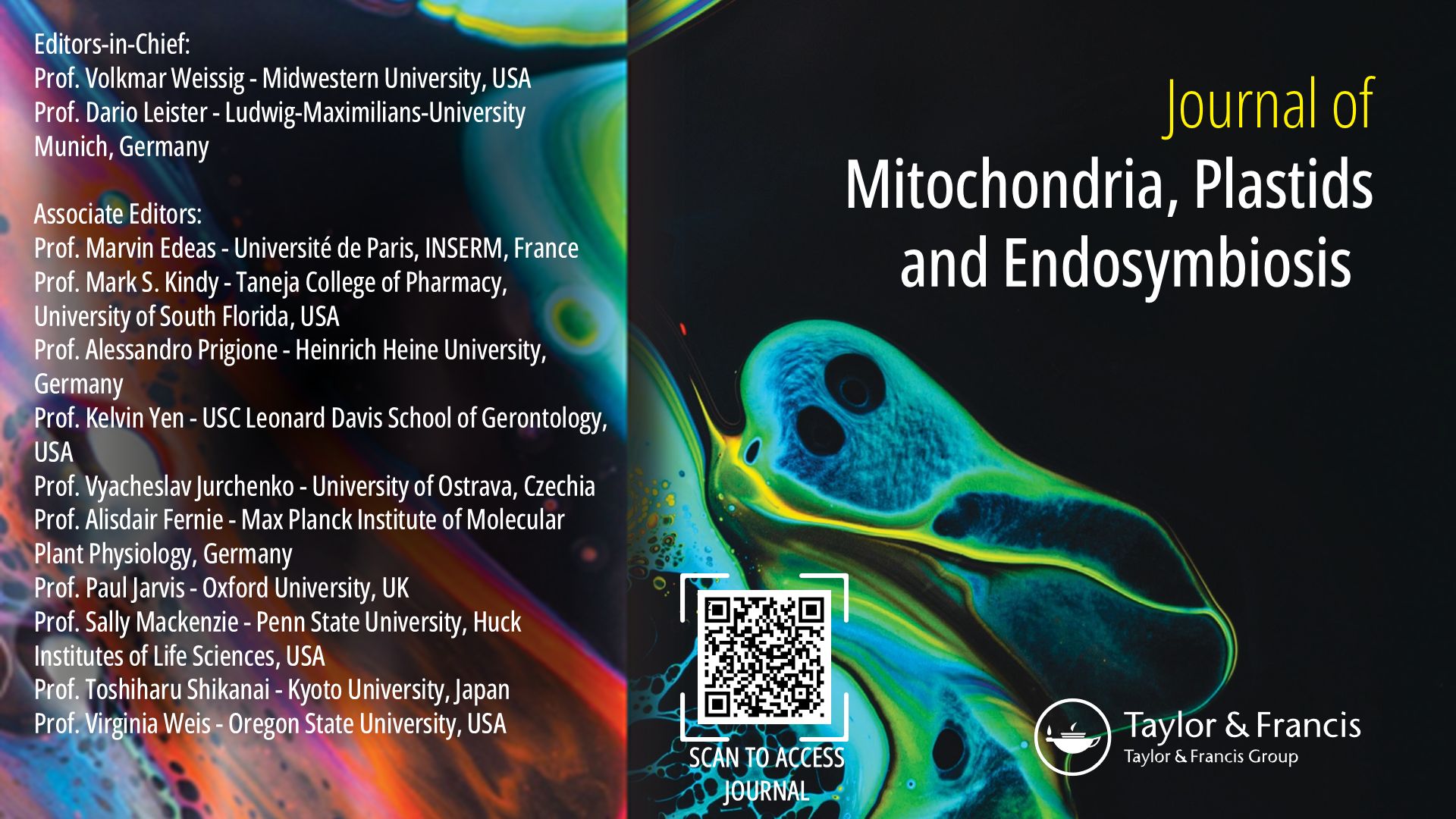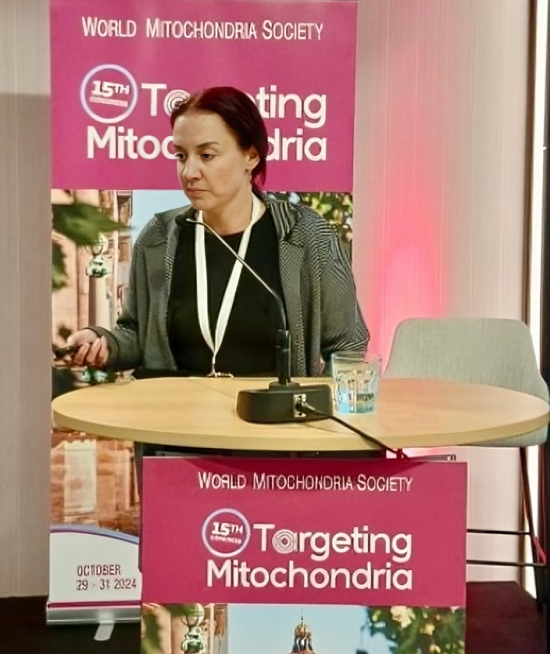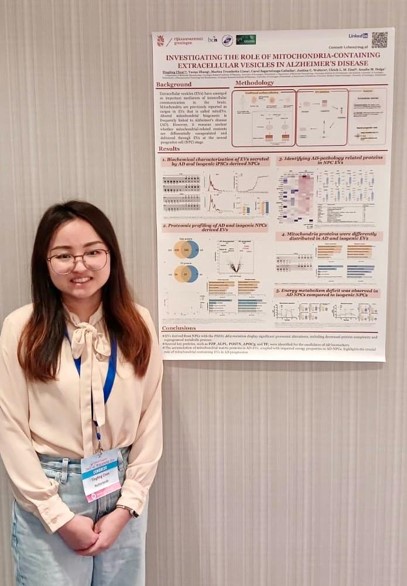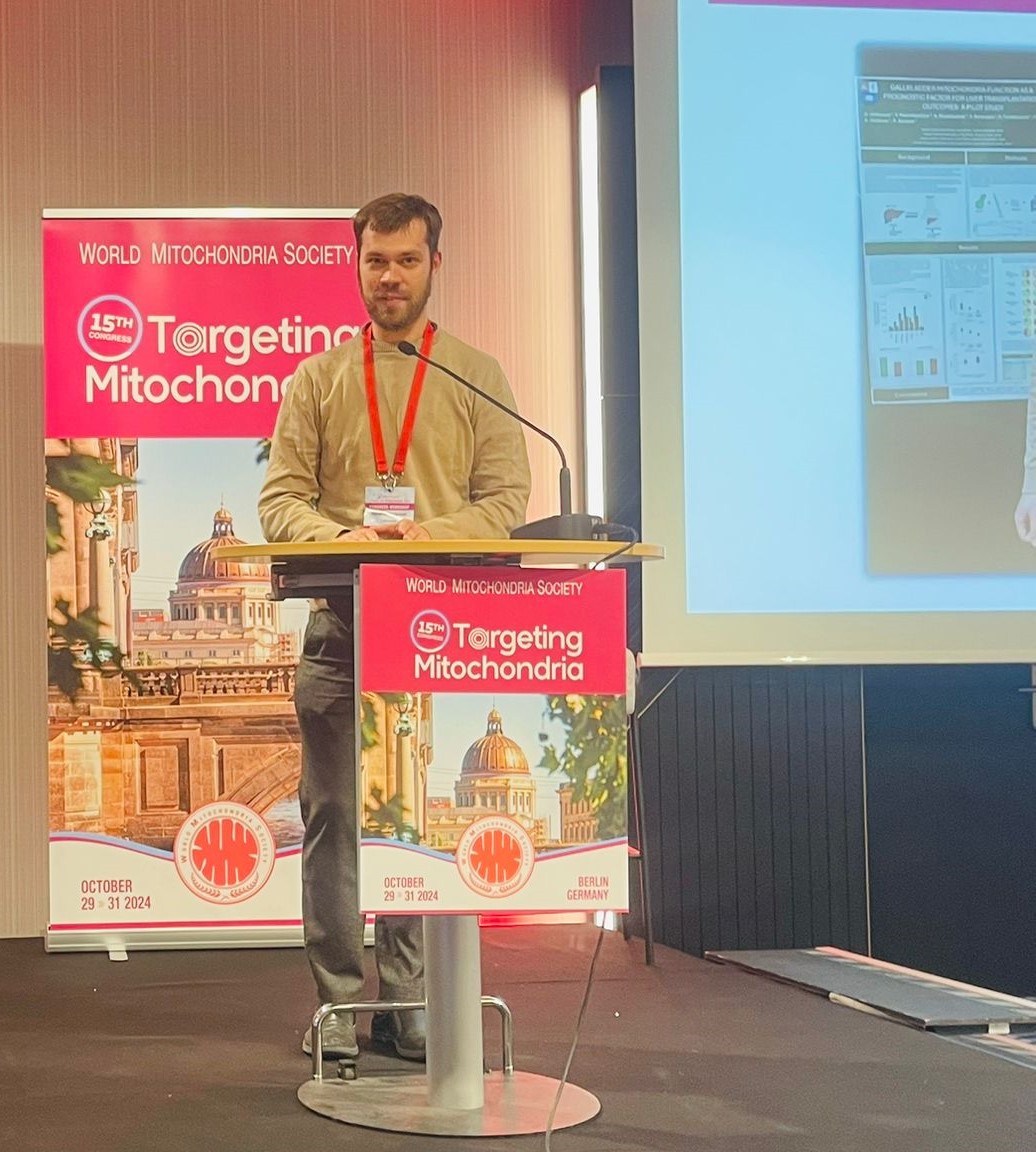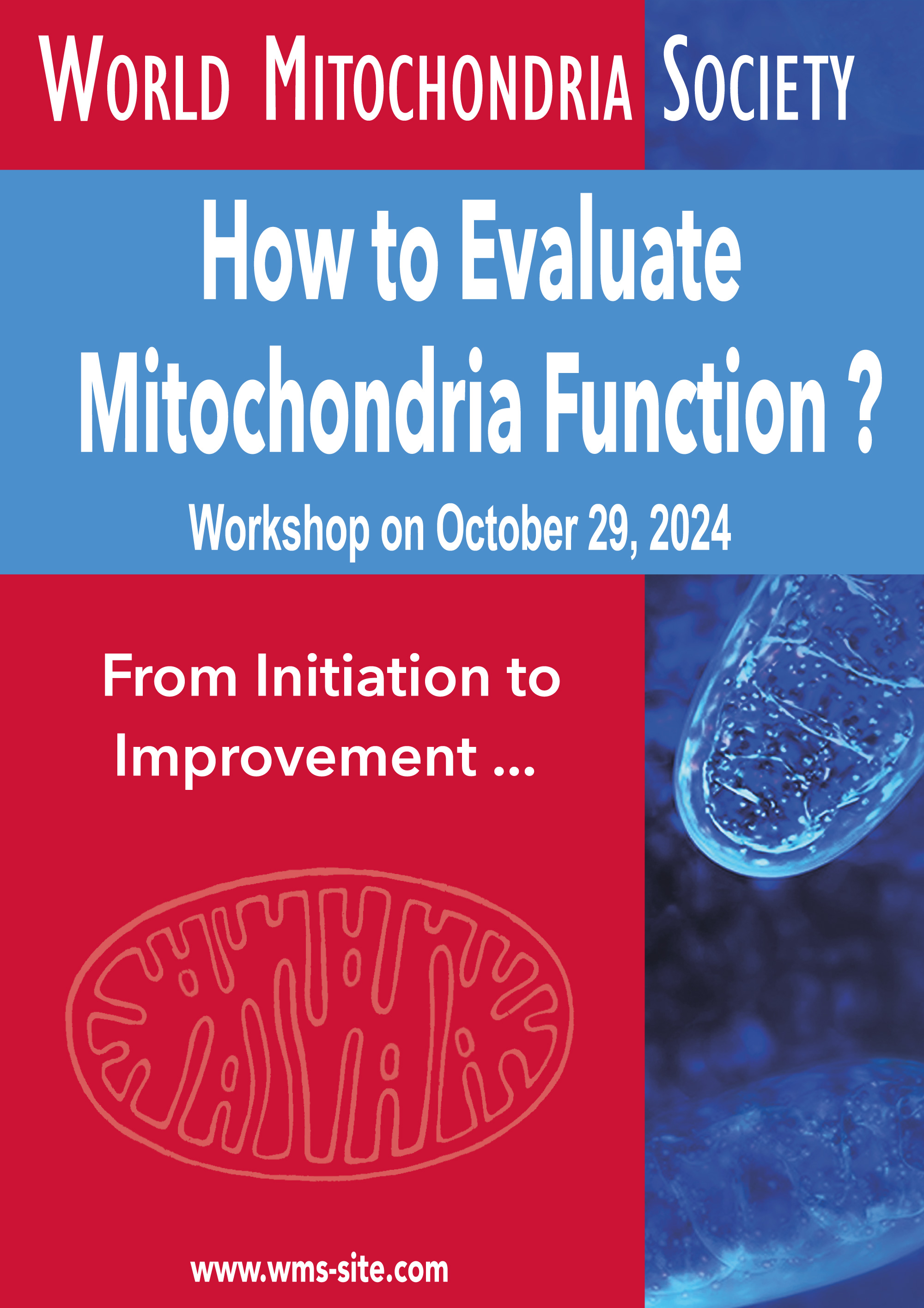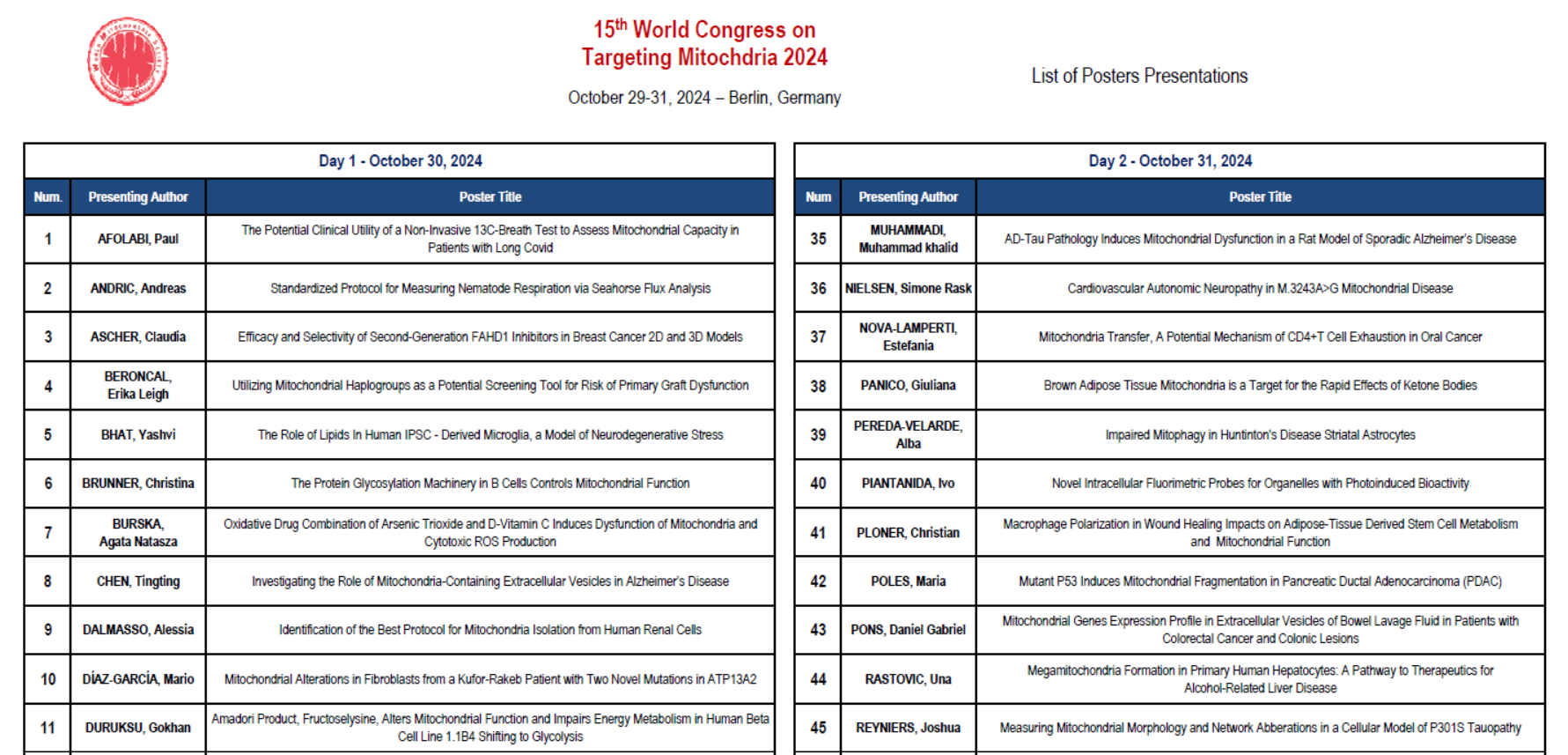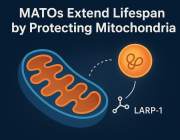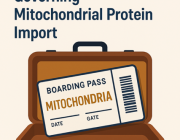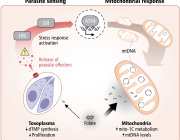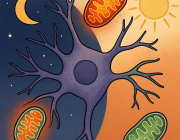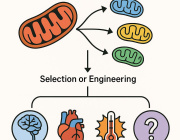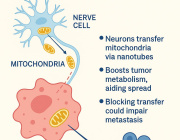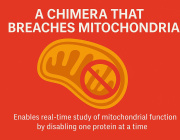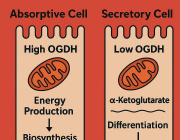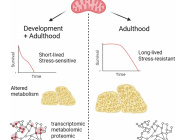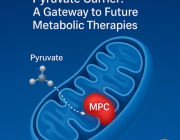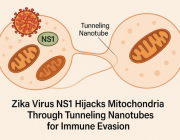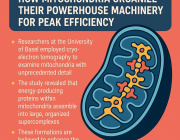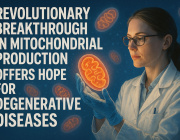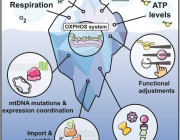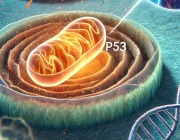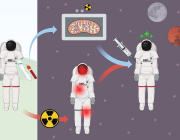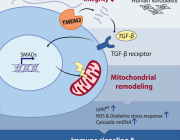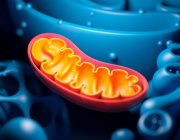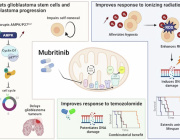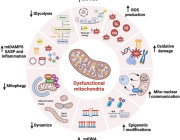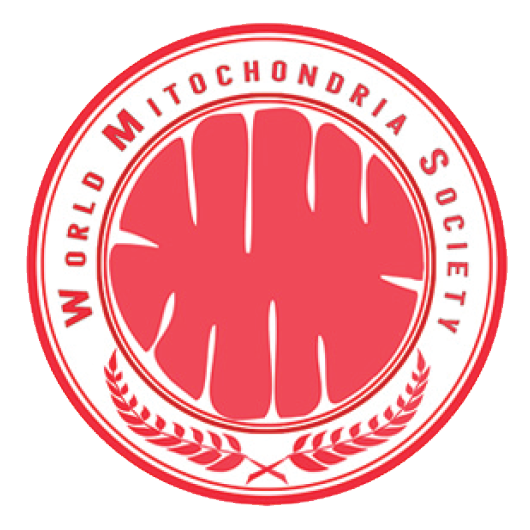Final agenda of 5th World Congress on Targeting Mitochondria - Berlin, Germany
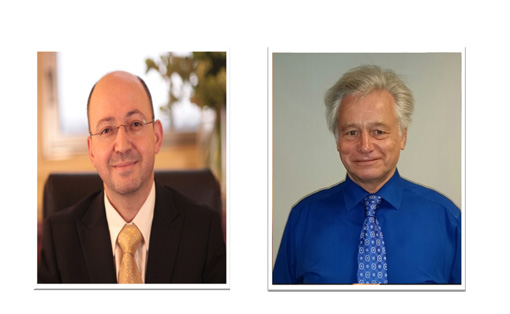
Pr Marvin Edeas - Pr Volkmar Weissig
Chairmen of the Scientific Committee
The Chairmen of the Scientific Committee of Targeting Mitochondria 2014 are happy to announce the final agenda of Targeting Mitochondria, Pr Marvin Edeas - Pr Volkmar Weisig are accounce the final agenda of Targeting Mitochondria World Congress which will be held at Ritz-Carlton Hotel on October 29-30-31, 2014.
Dr. D. Kraus will talk about identification of fat-accumulation gene

The Würzburg researcher Daniel Kraus and his international colleagues have identified a gene that plays a major role in fat gain. The scientists inhibited the expression of this gene in mice and the animals became leaner – while on the same diet – without showing any side effects. They presented their work in the science magazine Nature. Scientific committee invited Dr. D. Kraus to talk this study during Targeting Mitochondria 2014.
In recent decades, people's eating habits in Western societies have changed profoundly. Meat consumption has changed from occasionally to regularly; fat and high-energy carbohydrates are always available. At the same time, however, we are less physically active on the job and in everyday situations and need less energy.
The excess nutritional energy is stored as adipose tissue. This storage function was crucial particularly in times where famines were common with no supermarket around the corner to shop for food. Today, however, this function has a boomerang effect: Many people are suffering from the excess energy storage in the form of diet-induced obesity; they even develop associated diseases as a consequence.
NNMT plays a major role in "fat accumulation"
The enzyme NNMT (nicotinamide N-methyltransferase) is crucial in the "accumulation" of adipose tissue. Daniel Kraus, medical scientist at the Würzburg university hospital, and his colleague Qin Yang came across the NNMT gene during their work as post-doctoral researchers with Professor Barbara B. Kahn in Boston which involved comparing mice with genetically altered adipose tissue. They found that the adipose tissue of "obese" mice contained more NNMT than that of "lean" mice.
The researchers subsequently suppressed NNMT in obese mice and studied how this affected the animals' entire metabolism. They used a special magnetic resonance analysis to examine the tissue composition in the living mice and found out that the amount of adipose tissue was decreasing - and that even though the mice were not eating less or moving more. Nor did they excrete more fat than the animals in the control group. Instead, Kraus and Yang detected hints that NNMT regulates the consumption of high-energy molecules in the adipose tissue. Increased amounts of by-products of such energy carriers were excreted with the mice's urine. No adverse effects were found during the test. To the contrary: "The liver and kidney values were normal. The fatty degeneration of the liver even improved in adipose mice," says Kraus.
But Daniel Kraus has not solved the problem of diet-induced obesity with this discovery. "We are far from deriving any treatment from this discovery," he says. Pharmaceutical companies interested Even though the metabolisms of mice and humans are similar, Kraus believes that more research is needed in the future. For this purpose, he is going to examine the fat tissue of adipose patients at the Würzburg university hospital in a next step. The researcher is mainly interested in the new metabolism-related findings of his research which is funded by the Deutsche Forschungsgemeinschaft (DFG).
The economic potential of developing a new drug to fight obesity is less important to him. "I am excited that we have come closer to understanding the concept of energy regulation," Kraus says. But he is aware that pharmaceutical companies take a great interest in this area of research: "Whoever is the first to successfully market such a seemingly simple solution to diet-related obesity will probably make a fortune," Kraus further. There is initial supporting evidence from other studies regarding the possibility to develop such a drug.
"But the past 20 years have seen a number of such alleged 'Eureka moments'," says Kraus.
"Nicotinamide N-methyltransferase knockdown protects against diet-induced obesity" Daniel Kraus, Qin Yang, Dong Kong, Alexander S. Banks, Lin Zhang, Joseph T. Rodgers, Eija Pirinen, Thomas C. Pulinilkunni, Fengying Gong, Ya-chin Wang, Yana Cen, Anthony A. Sauve, John M. Asara, Odile D. Peroni, Brett P. Monia, Sanjay Bhanot, Leena Alhonen, Pere Puigserver & Barbara B. Kahn. Nature. 2014 Apr 10;508(7495):258-62. doi: 10.1038/nature13198.
Study Led by Dr Martin Wu Upends Current Theories of How Mitochondria Began will be presented next week in Berlin
 Dr Martin Wu, from University of Virginia was invited by the scientific committee of Targeting Mitochondria World Congress to present his recent study about upends current theories of how mitochondria began.
Dr Martin Wu, from University of Virginia was invited by the scientific committee of Targeting Mitochondria World Congress to present his recent study about upends current theories of how mitochondria began.
According Dr Wu: "Parasitic bacteria were the first cousins of the mitochondria that power cells in animals and plants – and first acted as energy parasites in those cells before becoming beneficial, according to a new University of Virginia study that used next-generation DNA sequencing technologies to decode the genomes of 18 bacteria that are close relatives of mitochondria.
Microscopy Enables Detailed Insights into Mitochondria
The scientific committee of Targeting Mitochondria World Congress invited Dr. Martin Kerschensteiner to present his excellent work.
A new microscopy technique combining confocal and two-photon excitation microscopy with in situ pharmacological and genetic manipulation has given researchers insight into how the nervous system responds to disease and injury at the mitochondrial level.
Reactive oxygen species are important intracellular signaling molecules, but their mode of action is complex: In low concentrations, they regulate key aspects of cellular function and behavior; at high concentrations, they can cause oxidative stress, which damages organelles, membranes and DNA.
The new method allows researchers to record the oxidation states of individual mitochondria with high spatial and temporal resolution, and to analyze how reduction/oxidation (redox) signaling unfolds in single cells and organelles in real time. 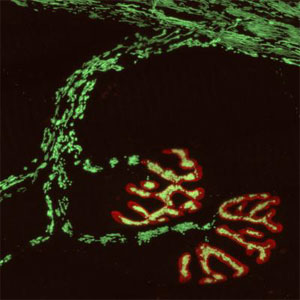
The nerve-cell mitochondria were imaged with a fluorescent redox sensor. Shown here is a peripheral nerve with the neuromuscular endplates stained in red. Courtesy of Ludwig Maximilian University and the Technical University of Munich.
"Redox signals have important physiological functions, but can also cause damage, for example, when present in high concentrations around immune cells," said professor Dr. Martin Kerschensteiner of Ludwig Maximilian University of Munich (LMU) and SyNergy, the Munich cluster for Systems Neurology. His team collaborated with that of Technical University of Munich (TUM) professor Dr. Thomas Misgeld, also of SyNergy.
In previous studies, Kerschensteiner and Misgeld found that oxidative damage of mitochondria could contribute to axonal destruction in inflammatory diseases such as multiple sclerosis.
For this work, they used redox-sensitive variants of green fluorescent protein (GFP) as visualization tools. They combined these with other biosensors and dyes, which allowed simultaneous monitoring of the redox signals and mitochondrial calcium currents, along with changes in electrical potential and pH gradient across the mitochondrial membrane.
The researchers used the method to study, for the first time, redox signal induction in response to neural damage in the mammalian nervous system (in this case, spinal cord injury). They found that severance of an axon results in a wave of mitochondrial oxidation beginning at the site of damage and propagating along the fiber. In addition, an influx of calcium at the axonal resection site was essential to cause functional damage to mitochondria.
"This appears to be a fail-safe system that is activated in response to stress and temporarily attenuates mitochondrial activity," Misgeld said. "Under pathological conditions, the contractions are more prolonged and may become irreversible, and this can ultimately result in irreparable damage to the nerve process."
Another first-ever result was the imaging of spontaneous contractions of mitochondria accompanied by a rapid shift in the redox state of the organelle.
Dr. Martin Kerschensteiner will present his strategic studies during Targeting Mitochondria 2014.
For more information: www.targeting-mitochondria.com
Energizing sick mitochondria with vitamin B3

Dr Nahid Khan, from University of Helsinki, Finland will present her strategic work about energizing sick mitochondria with vitamin B3 during Berlin conference.
According Dr Khan: Vitamins B have recently been turned out to be potent modifiers of energy metabolism, especially the function of mitochondria.
Vitamin B3, (niacin) has been found to delay the signs of aging in animal models.
An international collaboration between the University of Helsinki and École Polytechnique Fédérale de Lausanne reported today in the high-profile journal, Embo Molecular Medicine, that vitamin B3 form, nicotinamide riboside, can slow down the progression of mitochondrial disease, suggesting its potential as a novel therapy approach to adult-onset mitochondrial muscle diseases.
Mitochondria power up all cells in our bodies, by generating fuel, ATP, for all cellular functions. Dysfunction of these cellular engines can cause mitochondrial disorders, which are the most common cause of inherited metabolic diseases in adults and children.
Mitochondrial myopathy is the most frequent form of adult mitochondrial disorder. The typical symptoms in the patients are muscle weakness, pain and cramps. Despite the progressive nature of these diseases, no curative treatment is available.
In their current publication, Dr Nahid Khan in Prof Anu Suomalainen-Wartiovaara's group showed that feeding mice with food supplemented with B3 form, nicotinamide riboside, delayed their mitochondrial myopathy. The treatment increased mitochondrial mass and function, and cured the structural abnormalities.
These results clearly showed the potential of this vitamin B form, a natural constituent of milk, to activate dysfunctional mitochondrial metabolism, Professor Wartiovaara-Suomalainen states. She continues: These results are a breakthrough for understanding the mechanisms of human mitochondrial muscle diseases and for exploring the efficient treatment options for these progressive disorders of adults. They also highlight the potent role of niacin in guiding mitochondrial energy metabolism.
Source: University of Helsinki
Dr Nahid Khan will present his strategic studies during targeting Mitochondria 2014.
For more information: www.targeting-mitochondria.com
Rotten egg gas holds key to healthcare therapies
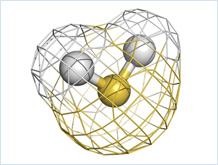 The innovative study from Pr. Matt Whiteman about Rotten egg gas will be discussed during Targeting Mitochondria World Congress.
The innovative study from Pr. Matt Whiteman about Rotten egg gas will be discussed during Targeting Mitochondria World Congress.
It may smell of flatulence and have a reputation for being highly toxic, but when used in the right tiny dosage, hydrogen sulfide is now being being found to offer potential health benefits in a range of issues, from diabetes to stroke, heart attacks and dementia.
A new compound (AP39), designed and made at the University of Exeter, could hold the key to future therapies, by targeting delivery of very small amounts of the substance to the right (or key) places inside cells.
Scientists in Exeter have already found that the compound protects mitochondria – the “powerhouse” of cells, which drive energy production in blood vessel cells. Preventing or reversing mitochondrial damage is a key strategy for treatments of a variety of conditions such as stroke, heart failure, diabetes and arthritis, dementia and ageing. Mitochondria determine whether cells live or die and they regulate inflammation. In the clinic, dysfunctional mitochondria are strongly linked to disease severity.
Professor Matt Whiteman, of the University of Exeter Medical School, said: “When cells become stressed by disease, they draw in enzymes to generate minute quantities of hydrogen sulfide. This keeps the mitochondria ticking over and allows cells to live. If this doesn’t happen, the cells die and lose the ability to regulate survival and control inflammation. We have exploited this natural process by making a compound, called AP39, which slowly delivers very small amounts of this gas specifically to the mitochondria. Our results indicate that if stressed cells are treated with AP39, mitochondria are protected and cells stay alive.”
Dr. Mark Wood of Biosciences, at the University of Exeter, added “Although hydrogen sulfide is well known as a pungent, foul-smelling gas in rotten eggs and flatulence, it is naturally produced in the body and could in fact be a healthcare hero with significant implications for future therapies for a variety of diseases.”
The research is being conducted in several models of disease, and pre-clinical results are promising. For example, in models of cardiovascular disease, research shows that more than 80 per cent of the powerhouse mitochondria cells survive under otherwise highly destructive conditions, if the AP39 is administered. Professors Whiteman and Wood are now working towards advancing the research to a stage where it can be tested in humans.
The study was published in the journal Medicinal Chemistry Communications. A follow-up study, published in The Nitric Oxide Journal with collaborators from the University of Texas Medical Branch, also found that the compound selectively prevented mitochondrial DNA in mitochondria. Once damaged, this DNA cannot be repaired, leaving individuals more vulnerable to disease symptoms.
Early indications in small-scale studies, presented at this year’s 3rd International Conference on Hydrogen Sulfide in Biology and Medicine in Kyoto, also show that in high blood pressure, AP39 reversed blood vessel stiffening and lowered blood pressure. It also dramatically improved chances of survival after a heart attack by slowing the heartbeat, improving its efficiency.
The collaboration was one of 20 research projects highlighted by Universities UK in their ‘Ideas for Life’ compilation for Universities Week of some of the most exciting, innovative research coming from higher education institutions across the UK.
Ph. Matt Whiteman will present his strategic studies during targeting Mitochondria 2014
Do mitochondria care about insulin resistance?

Dr. Chrysi Koliaki will present her last studies published in Molecular Metabolism.
In the last issue of Molecular Metabolism, Dr. Chrysi Koliaki addressed the intensively debated term “mitochondrial dysfunction” in the context of insulin resistance using a comprehensive cell-autonomous approach, which allowed constant substrate delivery to distinct insulin-sensitive cell types circumventing confounding effects of in vivo inter-tissue crosstalk.
Do mitochondria care about insulin resistance? (2)

Dr. Chrysi Koliaki will present her last studies published in Molecular Metabolism.
In the last issue of Molecular Metabolism, Dr. Chrysi Koliaki addressed the intensively debated term “mitochondrial dysfunction” in the context of insulin resistance using a comprehensive cell-autonomous approach, which allowed constant substrate delivery to distinct insulin-sensitive cell types circumventing confounding effects of in vivo inter-tissue crosstalk.
The dream of clean and intact mitochondria

The scientific committee invited Dr. Hans Zischka to present his excellent work.
Mitochondrial research indispensably relies on investigations of isolated biochemically intact organelles. However, standard methods lack precisely adjustable and reproducible settings for cell disruption, the initial and most important step in the isolation procedure of mitochondria.
Novel way blocks tumour growth into cancer
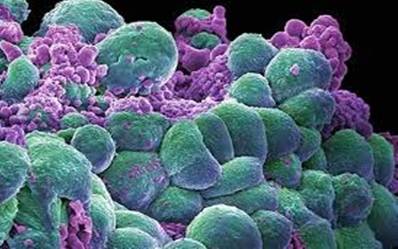 Targeting Mitochondria Scientific Committee invited Paolo E. Porporato to present his work about mitochondria and cancer.
Targeting Mitochondria Scientific Committee invited Paolo E. Porporato to present his work about mitochondria and cancer.
In pioneering research on models of human tumours in mice, researchers have successfully blocked metastasis - the strategy adopted by tumour cells to transform into an aggressive form of cancer.
According to researchers from Universite catholique de Louvain (UCL) in Belgium, blocking metastasis or even prevent their formation would be a giant step in the fight against cancer.
The researchers achieved this feat by studying mitochondria in tumour cells. These organelles are considered the cells' powerhouse.
"When their functioning is altered, the mitochondria can promote cell migration, thus leading to the formation of metastasis," said Post-doc Paolo E. Porporato from Universite catholique de Louvain's Institute of Experimental and Clinical Research (IREC). Sonveaux's team examined the molecular mechanism responsible for the mitochondria's ability to promote metastasis.
They succeeded in showing that under certain conditions, the mitochondria produce more free radicals known as superoxide ions. It is this overproduction of superoxide that leads to the formation of metastasis and, consequently, the growth of a tumour, they found.
"The production of superoxide by mitochondria can be blocked by very specific antioxidants," Sonveaux added. These compounds turned out to be very efficient at blocking the migration of tumour cells and preventing the spontaneous formation of human tumour metastasis in mice, the study, published in the journal Cell Reports, said.
Post-doc Paolo E. Porporato will present his strategic studies during targeting Mitochondria 2014
Targeting Mitochondria World Congress 2014 is already a Huge Success
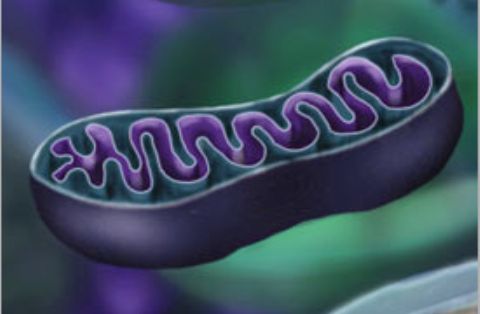 For this new edition of Targeting Mitochondria World Congress, Hotel Ritz Carlton will open its door from October 29 to 31, 2014 to gather more than 400 participants for three days coming from all around the world.
For this new edition of Targeting Mitochondria World Congress, Hotel Ritz Carlton will open its door from October 29 to 31, 2014 to gather more than 400 participants for three days coming from all around the world.
To access to the updated list of participants, please click here.
Come and Network with Targeting Mitochondria participants by registering to the congress here.
Stem cells overcome damage in other cells by exporting mitochondria
 The scientific committee invited Dr. Anurag Agrawa to present his excellent work.
The scientific committee invited Dr. Anurag Agrawa to present his excellent work.
He identified a protein that increases the transfer of mitochondria from mesenchymal stem cells to lung cells. In work published in The EMBO Journal, the researchers reveal that the delivery of mitochondria to human lung cells can rejuvenate damaged cells.
The migration of mitochondria from stem cells to epithelial cells also helps to repair tissue damage and inflammation linked to asthma-like symptoms in mice.
Viral Hepatitis and Mitochondrial Dynamics will be highlighted by Pr Aleem Siddiqui
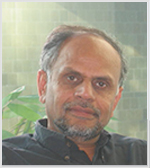 Pr Aleem Siddiqui, from Division of Infectious Diseases, Department of Medicine, University of California, San Diego, La Jolla, CA 92093, USA, will highlight the relation between Viral Hepatitis and Mitochondrial Dynamics during Targeting Mitochondria World Congress 2014.
Pr Aleem Siddiqui, from Division of Infectious Diseases, Department of Medicine, University of California, San Diego, La Jolla, CA 92093, USA, will highlight the relation between Viral Hepatitis and Mitochondrial Dynamics during Targeting Mitochondria World Congress 2014.
Microbiota & Mitochondria: The Intriguing Relationship
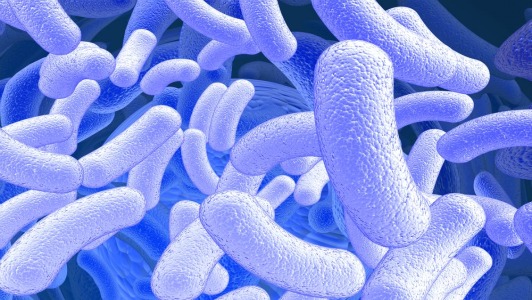
Microbiota & Mitochondria: A Promising Target
The scientific committee will discuss the axes of the next upcoming Targeting Mitochondria World Congress 2014. One of the strategic axes will be Modulation Diversity & Variety of Microbiota by Mitochondria.
Cutaneous respirometry in healthy volunteers: a novel technique for monitoring mitochondrial function awarded by Targeting Mitochondria Scientific Committee
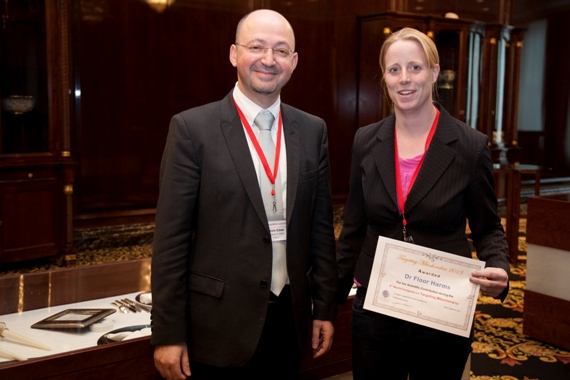 Dr Floor Harms, from Department of Anesthesiology, Laboratory of Experimental Anesthesiology, Erasmus MC – University Medical Center Rotterdam, The Netherlands was awarded by Scientific Committee of Targeting Mitochondria 2013, for her researches about Cutaneous respirometry in healthy volunteers: a novel technique for monitoring mitochondrial function.
Dr Floor Harms, from Department of Anesthesiology, Laboratory of Experimental Anesthesiology, Erasmus MC – University Medical Center Rotterdam, The Netherlands was awarded by Scientific Committee of Targeting Mitochondria 2013, for her researches about Cutaneous respirometry in healthy volunteers: a novel technique for monitoring mitochondrial function.
More Articles...
- The 4th edition of Targeting Mitochondria World Congress was a huge success
- Press Release for Immediate Release: Berlin Targeting Mitochondria World Congress reached a record of participants from pharma, biotech industries and academics
- The final agenda of Targeting Mitochondria 2013, Berlin-Germany is now available
- Abstract Submission Deadline Extended for Posters Presentation until Friday, September 27 for Targeting Mitochondria 2013






